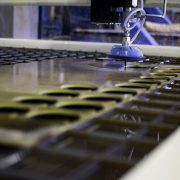Pack Expo 2017 – The 3 most popular food processing trends
The Pack Expo 2017 event, which was held in Las Vegas, was eagerly anticipated with many people in the food and beverage industry. The world’s leading businesses involved in the industry were all there, whether exhibiting or networking. The show always provides a brilliant chance to see the latest trends and this year it wasn’t a letdown. These are the top 3 food processing trends we expect to see in the coming year:
Virtual reality
We expect an increasing number of businesses to take advantage of virtual reality and its ability to interact with food processing equipment and its space. The developments in technology now allow businesses to walk through their production areas and see the equipment in its place, to aid the planning and purchasing processes. The virtual reality equipment even allows users to interact with a machine and visualise how the machine carries out the production process. This useful simulation allows to check the machine meets the requirements of the business before purchasing.
Convenient, prepared foods
If you are in the food and beverage industry you will not have missed the rise in the number of popular meal kit companies and also the increase in online grocery companies. The event featured many businesses which service the convenience market, and they certainly created a buzz. Professionals in the industry know that consumers are seeking high-quality products which offer them increased convenience, such as pre-prepared meal kits and pre-flavoured meals. Consumers want to cook from scratch but they also want it to be as quick and convenient as possible.
Buildings designed around processing
Companies know how important the right machinery is for their business, which is why they are now designing the business premises around the machinery. An increasing number of businesses are finding that building and designing a new facility can result in a longer-term investment. We expect more businesses to consider the long-term aspect of the business and its production levels rather than an initial speed of bringing products to market.







